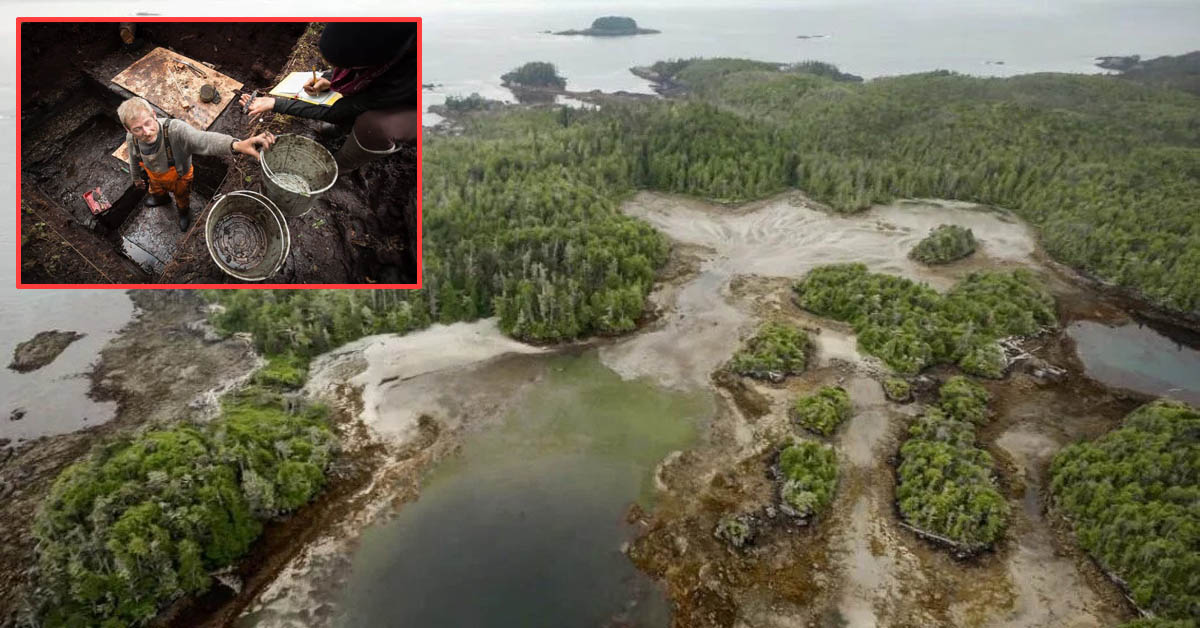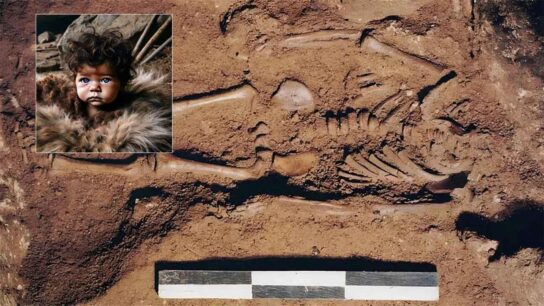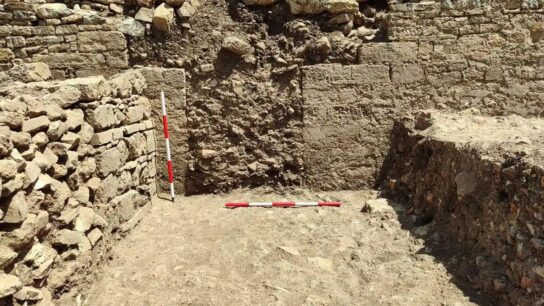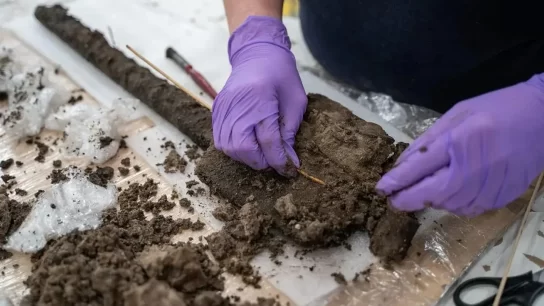A Student Found an Ancient Canadian Village That’s 10,000 Years Older Than the Pyramids
The history of humanity is prone to becoming revised whenever new significant archaeological findings are uncovered.
It was traditionally believed that the Sumerians, Egyptians, Mayans, etc. were one of the earliest civilizations on Earth, however, this is not entirely accurate.
A few years back, in a distant region of Canada, archaeologists uncovered the remains of an ancient village that predates even the pyramids of Egypt. In point of fact, it is more than three times older.
In 2016, Alisha Gauvreau, a Ph.D. student in the anthropology department at the University of Victoria, was one of the people who contributed to the discovery of a village that dates back approximately 14,000 years.

This would make the settlement older than the pyramids in Egypt. The indigenous Heiltsuk people have an oral history regarding a sliver of land that existed throughout the Ice Age but did not freeze over, and the team’s goal was to find evidence that supports this account. (Source)
The Heiltsuk are said to have sought refuge there during that time, according to local folklore. After the discovery and excavation of a settlement on Triquet Island, which is located on the Central Coast of British Columbia in Canada, a legend that dates back 14,000 years was proven to be true.
“People flocked there for survival because everywhere else was being covered by ice, and all the ocean was freezing and all of the food resources were dwindling,” said Heiltsuk Nation member William Housty.
Ancient spears, fish hooks, a device made of wood for launching projectiles, and tools for lighting fires were found by Gauvreau and her team during their excavation of the site.
According to carbon dating, this abandoned village from the 1800s was inhabited as long as 14,000 years ago, making it three times as old as the pyramids of Giza and one of the oldest settlements in North America.
“There are several sites that date to around the same time as the very early date that we obtained for Triquet Island, so what this is suggesting is that people have been here for tens of thousands of years,” said Gauvreau.
However, Triquet Island was never covered by ice, despite the fact that it existed during the Ice Age. According to Gauvreau, Sea levels in the region are said to have remained constant over the course of time as a result of the phenomenon known as sea level hinge. “So all the rest of the landmass was covered in ice,” she explained.
“As those ice sheets started to recede — and we had some major shifts in sea levels coastwide, so further to the north and to the south in the magnitude of 150 to 200 meters of difference, whereas here it remained exactly the same.”
As a result, Gauvreau explains, visitors to Triquet Island could keep coming back over the centuries. People “were definitely sticking around Triquet Island longer than anywhere else,” she said, even though other adjacent sites also reveal signs of ancient residents. “And I could go on, but basically, all of these things, coupled with the fallen assemblage, tell us that the earliest people were making relatively simple stone tools at first, perhaps expediently, due to the parent material that was available at the time,” Gauvreau noted.
She continued saying that the site provides evidence that these early humans utilised boats for both the hunting of marine mammals and the gathering of shellfish. Later on, in order to acquire non-local materials such as obsidian, greenstone, and graphite for their toolmaking, they engaged in extensive trading or traveled large distances.
Archaeologists and anthropologists believe that the discovery lends credence to an idea known as the “Kelp Highway Hypothesis.” This hypothesis suggests that the first people arrive in North America followed the coastline in boats in order to avoid the glacial terrain. “It certainly adds evidence to the fact that people were able to travel by boat in that coastal area by watercraft,” Gauvreau said.
The enhanced archaeological record also gives new evidence for the Heiltsuk Nation, which has collaborated with archaeologists for many years to exchange information and identify locations such as Triquet Island.
The nation routinely negotiates with the government of Canada on issues pertaining to the governance of the territory and the management of natural resources. The outcome of these negotiations is partially dependent on the community’s track record of inhabiting the area for extended periods of time.
“So when we’re at the table with our oral history, it’s like me telling you a story,” Housty says. “And you have to believe me without seeing any evidence.”
But he explained, with the oral history and archaeological evidence “dovetailing together, telling a really powerful tale,” the Heiltsuk have new advantages at the negotiating table. “That’s really going to be very significant… and I think will definitely give us a leg up in negotiations, for sure,” he said.




